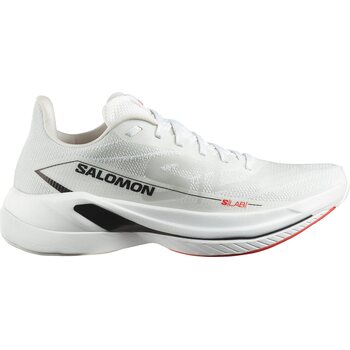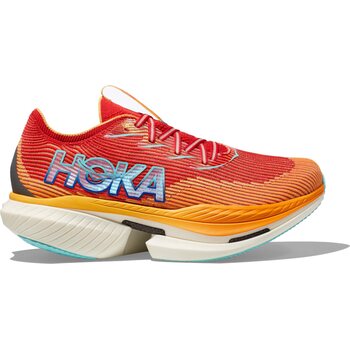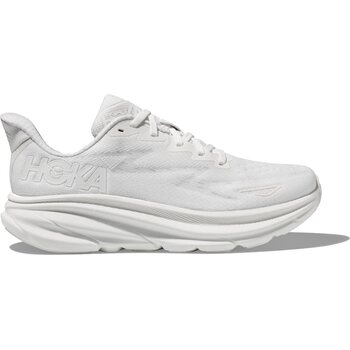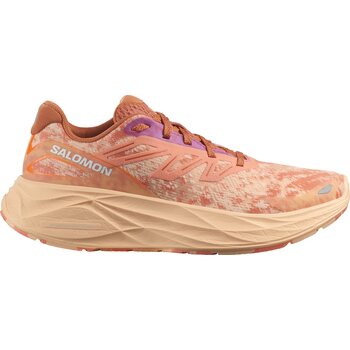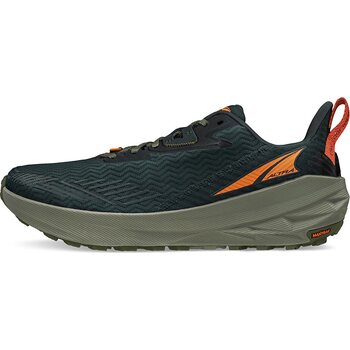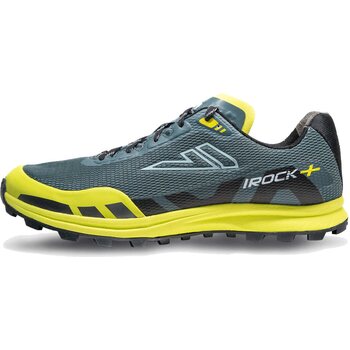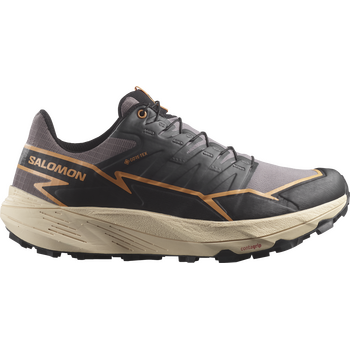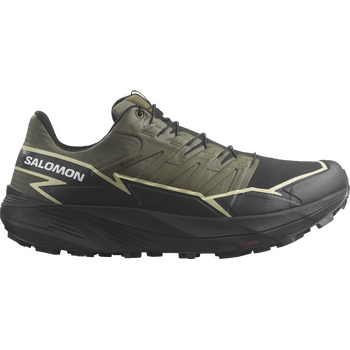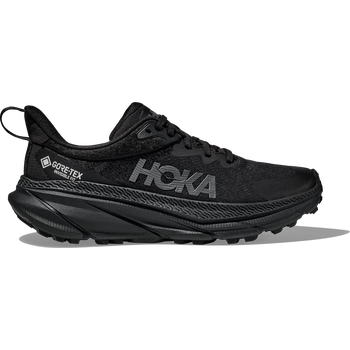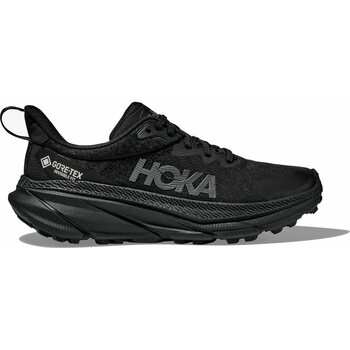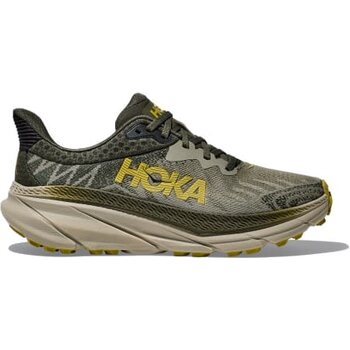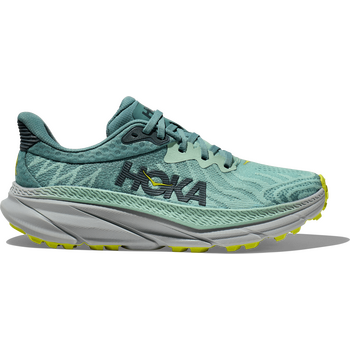How to choose a running shoe
Běh by Varuste.net / Toimisto-Jorma, 3.7.2024
Whether you're a novice runner or a seasoned marathoner, choosing the right pair of shoes is crucial for a comfortable and safe running experience. In this article, you'll find ideas and tips for selecting running shoes for different surfaces: hard surfaces, trails, and with a special focus on hybrid/multi-purpose shoes that perform well on both tough terrains and trails.
HARD SURFACE RUNNING SHOES
Running on hard surfaces like asphalt places specific demands on running shoes.
Choose shoes with adequate cushioning, especially in the heel and forefoot areas.
Most modern running shoes use various foam technologies such as EVA or PU foam, which provide excellent shock absorption.
Choose shoes with a strong heel cup and support structures for the midfoot. Some models also feature additional support on the inner edge (pronation support) or outer edge (supination support). A shoe without additional support is called
neutral.
Lightweight shoes reduce foot fatigue during long runs. However, lighter and thinner materials may wear out more quickly. Manufacturers differ in their material innovations; for durability alongside lightness, look for brands that incorporate special mesh materials or specific outsole materials.
Regularly change running shoes. Shoes wear out faster on hard surfaces, and old shoes lose their shock absorption capacity. The general recommendation is to change shoes every 500–800 kilometers. Many wrist computers/apps can help track the mileage per shoe.
As a general guideline, it's advisable to try on new shoes in the afternoon when your feet have had time to swell slightly from daily activities, to avoid accidentally buying shoes that are too small. Also consider foot swelling when choosing shoe size, especially for longer runs.
TIPS FOR CHOOSING TRAIL RUNNING SHOES
Trail running requires shoes that offer good grip and protection on uneven and slippery surfaces.
When running on trails, shoes endure a lot of wear from rocks, roots, and other obstacles. Reinforced toes and sides help protect the feet from impacts. A durable and thick sole also protects the soles of the feet from sharp objects.
Good fit is essential to prevent blisters and discomfort during long runs. Choose shoes with a supportive structure, such as heel lock and a snug yet flexible upper. Some shoes also feature adjustable lacing systems for improved fit. In addition to comfort, good fit significantly enhances safety, ensuring feet don't slip in more demanding technical trails, potentially preventing injuries and dangerous falls.
Waterproofing in trail running shoes often raises questions. Gore-Tex and other waterproof membranes may keep feet dry, but it's also important for shoes to be breathable to prevent excessive sweating. Another option is to choose completely membrane-free shoes and consider that the shoe may get wet
(good fit plays an important role here).
While durability is important in trail running shoes, they shouldn't be too heavy. Lightweight, flexible shoes allow for better running posture and reduce foot fatigue during long performances. Lightweight yet durable materials and a flexible midsole that follows the natural movement of the foot are good choices. Nowadays, shoes from leading manufacturers are evolving rapidly, improving features related to this.
The drop, or the height difference between the heel and forefoot, often varies widely in trail running shoes. A small drop (4-6 mm) provides a better feel for the terrain, while a larger drop (8-12 mm) offers more cushioning. Choose a drop that suits your running style and the terrain where you run the most.
Trail running shoes wear out quickly, so it's good to change them regularly. Trail running shoes should be changed approximately every 500–800 kilometers or when they begin to show signs of wear.
HYBRID SHOES / GRAVEL RUNNING SHOES
Hybrid or gravel running shoes are a great choice if your route varies between asphalt and trails, or if you enjoy running on both types of terrain. One solution, of course, is to have separate footwear for off-road and hard surfaces, but if you want to minimize gear and manage with one shoe for all surfaces, there are good and advanced hybrids available nowadays that provide a comfortable feel in both conditions.
Versatile sole: Choose shoes with a sole that offers good grip on both hard and soft surfaces. The tread pattern should not be completely smooth; some type of trail shoe pattern is good to have in the shoe.
Comfort: Look for models with adequate cushioning and support for various surfaces. Because the shoe is also used on hard surfaces, more cushioning is needed than just running on soft surfaces.
Appropriate weight: Hybrid/gravel shoes should not be too heavy but should be supportive enough to withstand uneven trails.
Lastly,
Sporty»Outdoorové aktivity»Boty»Běžecké boty»Trailové běžecké boty»Pánské»
Hoka Challenger ATR 7 GTX Mens
☆☆☆☆☆ (8)
Dostupné skladem
Sporty»Outdoorové aktivity»Boty»Běžecké boty»Trailové běžecké boty»Dámské»
Hoka Challenger ATR 7 GTX Womens
☆☆☆☆☆ (4)
Dostupné skladem
Sporty»Outdoorové aktivity»Boty»Běžecké boty»Trailové běžecké boty»Pánské»
Hoka Challenger ATR 7 Mens
☆☆☆☆☆ (4)
Dostupné skladem
Sporty»Outdoorové aktivity»Boty»Běžecké boty»Trailové běžecké boty»Dámské»
Hoka Challenger ATR 7 Womens
Kampaňová cena 116,72 €
Výprodejová cena od 112,99 €
Dostupné skladem
A FEW WORDS ABOUT CARBON FIBER PLATES
So what about the carbon fiber plates often mentioned in many, especially new shoe models?
What are the benefits of these?
Energy return:
A carbon fiber plate acts like a spring, helping to return energy expended in a runner's stride. This makes running more efficient and can improve running speed, especially on long distances.
Increased stability and support:
A carbon fiber plate provides the shoe with added stiffness, which helps support the foot and reduces foot fatigue on long runs. This stability can also help reduce the risk of injury. Speaking of injury risk, in trail running shoes, the stiffness of the plate can protect the sole of the foot from sharp rocks and branches and other sharp enemies in the terrain.
Better stride and push-off:
A carbon fiber plate guides and optimizes a runner's stride, especially during the push-off phase. This can make the stride smoother and more dynamic, which can be particularly beneficial for competitive runners.
Mohlo by vás zajímat také
Salomon x Varuste.net: juoksukauden avaus 13.4.2024
Tervetuloa
Varuste.net:n ja Salomonin yhteiseen kevätkauden avauspäivään lauantaina 13.4. klo 10.30 -15.00.
Päivän aikana pääset tutustumaan Salomonin uutuustuotteisiin ja kestosuosikkeihin asiantuntijoiden opastuksella.
Luvassa on luentoja juoksukengistä, -vaattei...
Saucony Trail Evening 24.4.
(Note: program will be finalized on week 15)
Special guest Saucony-athlete Max Moberg
16.30–19.30
Saucony Van with test shoes and Saucony representatives on site (Varuste.net parking lot, on the right side of the entrance)
17.30–18.00
Max Moberg and Sami Saarinen will give tal...
Trailrunning Day hosted by HOKA 20.4.
The program of the event will be published in week 15/2024
